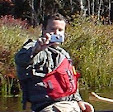It has been 19-months since this pandemic began, and it continues to turn our lives upside down. We now have effective vaccines to stop the spread of this deadly virus, but with vaccine resistance hospitals are still full and people continue to die. Tragically, COVID-19 has killed more people in the US than in all the wars of the 20th century combined.
If we have learned anything from this pandemic, though, it is the devastating effect of social isolation and the importance of physical activity. Throughout this pandemic paddling has been a lifeline for me. Now that I work at home, there is no better way to escape the house than to paddle.
During the initial lock-down, I did my paddling alone and close to home. As restrictions were lifted, we started to meet in small groups for up-and-back trips that didn’t involve a shuttle, often early in the morning before the crowds filled the parking lots. Now that I am vaccinated, my trips have a more normal feel. We are outside and socially distant. If we need to shuttle, we can roll down the windows and wear masks. The risk seems relatively low.
The restrictions of the pandemic forced all of us to look at familiar places in new ways. We realized that it is not necessary to travel to enjoy a day on the water. Lately, whitewater trips have taken a backseat to local flatwater trips. Crashing waves have been replaced with easy currents as I once again explore the twists and turns of nearby rivers and streams. No matter where we are it is great to be outside with friends and disconnected from depressing news and social media.

















